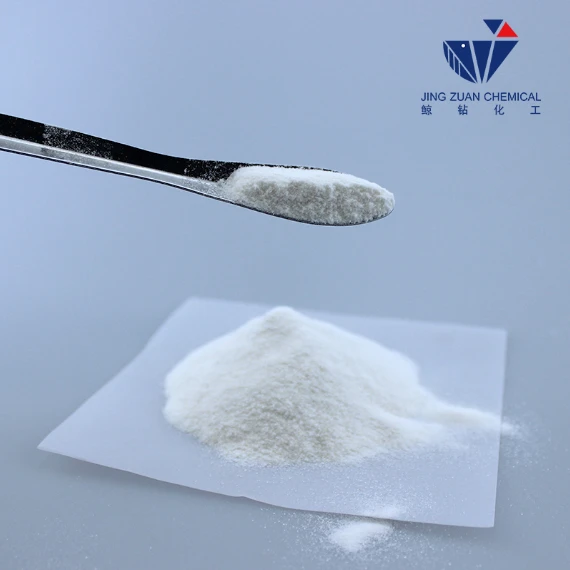
May . 30, 2025 23:16 Back to list
What is HPMC? Key Binder for Building Coatings & Adhesives
- The foundational chemistry of HPMC
- Technical performance specifications
- Manufacturer quality comparison table
- Industry-specific formulation guidance
- Regional application spotlights
- Customization for emerging technologies
- Practical implementation scenarios

(what is hpmc)
What is HPMC? The Chemistry Behind Versatile Performance
Hydroxypropyl Methylcellulose (HPMC) represents a cellulose-derived polymer synthesized through alkalization and etherification processes. This non-ionic compound maintains exceptional stability across pH ranges from 3–11, with thermal gelation occurring between 60–90°C depending on substitution patterns. The molecule's amphiphilic nature enables water solubility while maintaining hydrophobic segments critical for surface interaction control. Industrial production utilizes bleached wood pulp (90% α-cellulose content) subjected to propylene oxide and methyl chloride treatments to achieve target MS (0.20-0.60) and DS (1.2-2.0) parameters governing rheological behavior.
Superior Material Properties Driving Adoption
Functional characteristics vary significantly with molecular substitution levels. Low-substitution HPMC (DS 1.3–1.6) achieves 25% faster dissolution rates than standard grades while maintaining adhesive strength above 1.8 MPa in EN 1348 testing. Comparative rheology studies indicate medium-viscosity grades (20,000–60,000 cP) deliver optimal sag resistance in vertical applications at 10-15% lower additive loadings versus competing thickeners. Environmental resistance testing demonstrates <7% viscosity variation after 500hrs UV exposure and thermal stability retention at -40°C to 120°C service temperatures.
| Manufacturer | Ash Content | Viscosity Range (cP) | Moisture Retention (ASTM D7190) | Set Time Variation |
|---|---|---|---|---|
| Standard Grade | ≤2.5% | 5,000-100,000 | 92±3% | ±30 mins |
| Premium Supplier A | ≤1.8% | 5,000-200,000 | 95±1% | ±15 mins |
| Premium Supplier B | ≤1.2% | 10,000-400,000 | 97±0.5% | ±8 mins |
Industrial Implementation Parameters
Optimal formulation percentages vary significantly by application: dry-mix mortars require 0.1-0.4% cellulose content while spray coatings necessitate 0.5-1.5% concentrations. Prehydration protocols should maintain slurry temperatures below 20°C during 30-minute dispersion phases to prevent uneven viscosity development. Recent technical bulletins highlight improved cohesion when combining 60,000 cP HPMC with 0.5% polycarboxylate superplasticizers, reducing water demand by 18% while maintaining 98% air void distribution uniformity.
Regional Specifications and Application Practices
Southeast Asian markets show distinct preference for powdered cellulose ethers, evidenced by the term แผ่น HPMC (HPMC sheets) referring to composite building panels. Thailand's construction sector consumed 42,000 MT of construction-grade polymer additives in 2023, with cellulose derivatives comprising 65% of the market. Production specifications vary regionally: ISO 3262-10 certified powders dominate European construction, while Chinese GB/T 29594 standard products with enhanced solubility characteristics show growing acceptance in developing economies.
Advanced Customization for Emerging Technologies
Tailored hydroxypropyl methylcellulose grades have enabled breakthrough applications including:
- Spray-applied 3D printable concrete with modified 120,000 cP formulations
- Transparent hydrogel films containing DS 2.0 HPMC for photovoltaic encapsulation
- Microbial-resistant coatings using zinc-complexed cellulose ether variants
Manufacturers now offer functionalization services achieving particle size distributions within D10=45μm, D50=85μm, D90=150μm parameters to optimize dispersion in high-pressure application systems.
What is HPMC Used For? Implementation in Material Systems
Primary utilization sectors demonstrate distinct formulation requirements:
- Building Coating Adhesive HPMC applications in tile adhesives require 30,000-60,000 cP grades achieving 24-minute open time while maintaining 1.2 N/mm² tensile adhesion
- Gypsum board production consumes 200,000 cP modified versions reducing water-powder ratio to 0.6:1 with 30% faster set times
- High-flexibility cement render formulations incorporate hydroxypropyl methylcellulose to achieve 0.35mm crack resistance at 3x standard deflection
New case studies show building coating adhesive HPMC enabling exterior insulation systems with 98% impact resistance retention after 50 freeze-thaw cycles.

(what is hpmc)
FAQS on what is hpmc
Q: What is HPMC?
A: HPMC (Hydroxypropyl Methylcellulose) is a cellulose-based polymer used as a thickener, binder, and film-former in construction materials, pharmaceuticals, and food products.
Q: How is HPMC used in building coating adhesives?
A: In building coatings and adhesives, HPMC improves water retention, workability, and adhesion while reducing sagging and cracking during application and drying.
Q: What are HPMC sheets (แผ่น HPMC) used for?
A: HPMC sheets are dissolvable films often used in pharmaceutical capsules, edible packaging, or industrial applications for controlled-release or biodegradable purposes.
Q: What is HPMC used for in construction?
A: HPMC enhances mortar, tile adhesives, and renders by providing viscosity control, moisture retention, and improved bonding strength in construction materials.
Q: Why is HPMC a popular additive in adhesives?
A: HPMC is favored for its non-toxic nature, thermal stability, and ability to modify rheology, ensuring consistent performance in adhesives under varying conditions.
-
Versatile Hpmc Uses in Different Industries
NewsJun.19,2025
-
Redispersible Powder's Role in Enhancing Durability of Construction Products
NewsJun.19,2025
-
Hydroxyethyl Cellulose Applications Driving Green Industrial Processes
NewsJun.19,2025
-
Exploring Different Redispersible Polymer Powder
NewsJun.19,2025
-
Choosing the Right Mortar Bonding Agent
NewsJun.19,2025
-
Applications and Significance of China Hpmc in Modern Industries
NewsJun.19,2025







